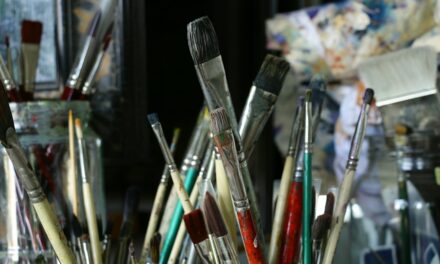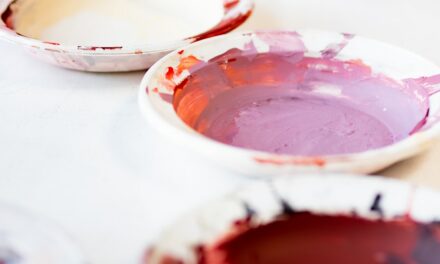Drawing comics with ink is a captivating art form that combines storytelling with visual creativity.
From the bold lines of classic superhero comics to the delicate strokes of indie graphic novels, ink serves as a versatile medium that can evoke a wide range of emotions and styles.
For aspiring artists, the journey into the world of comic creation can be both exhilarating and daunting, but understanding the fundamentals of working with ink can significantly enhance one’s artistic expression. The process of creating comics with ink is not merely about putting pen to paper; it involves a deep understanding of character design, pacing, and visual storytelling. Each panel must be carefully crafted to guide the reader through the narrative, making every stroke of ink a vital component of the overall composition.
As artists delve into this medium, they discover the joy of bringing characters to life and constructing immersive worlds that resonate with audiences. This article aims to provide a comprehensive guide for those eager to explore the art of drawing comics with ink, covering essential materials, techniques, and tips to elevate one’s comic artistry.
Summary
- Drawing comics with ink allows for bold and expressive lines that can bring your characters and stories to life.
- Essential materials and tools for drawing comics with ink include smooth paper, waterproof ink, nibs, brushes, and rulers.
- Creating a rough sketch is the first step in planning out the layout and composition of your comic panels.
- Refining the sketch and adding details helps to solidify the characters and settings in your comic.
- Inking the final lines of your comic with precision and confidence is crucial for achieving a professional and polished look.
Materials and Tools Needed for Drawing Comics with Ink
To embark on the journey of drawing comics with ink, one must first gather the appropriate materials and tools. The choice of paper is crucial; it should be smooth enough to allow for clean lines while also being sturdy enough to withstand the application of ink. Many artists prefer Bristol board for its durability and smooth surface, which is ideal for detailed work.
Additionally, sketchbooks with high-quality paper can serve as excellent practice grounds for developing ideas and refining techniques. When it comes to inking tools, there is a plethora of options available, each offering unique qualities that can influence the final outcome of the artwork. Traditional dip pens are favoured by many for their ability to create varied line widths and textures, allowing for a more organic feel.
On the other hand, fine liners and brush pens provide convenience and consistency, making them popular choices for artists who prefer a more controlled approach. Furthermore, having a selection of brushes in different sizes can be invaluable for adding expressive strokes and details. Ultimately, the choice of materials should reflect the artist’s personal style and comfort level, as well as the specific demands of the comic being created.
Creating a Rough Sketch for Your Comic
The first step in crafting a comic is to create a rough sketch that lays the foundation for the entire piece. This initial stage is where ideas begin to take shape, allowing artists to experiment with composition, character placement, and panel layout without the pressure of perfection. It is essential to approach this phase with an open mind, as rough sketches are meant to be fluid and adaptable.
Artists should focus on capturing the essence of their story and characters rather than getting bogged down by intricate details. During this stage, it can be helpful to use light pencil strokes that can be easily erased or modified. This allows for greater flexibility in adjusting proportions or repositioning elements within the panels.
Artists should consider the pacing of their narrative; how each panel flows into the next can significantly impact the reader’s experience. By varying panel sizes and shapes, one can create a dynamic rhythm that enhances storytelling. Once satisfied with the rough sketch, artists can move forward with confidence, knowing they have established a solid groundwork for their comic.
Refining the Sketch and Adding Details
With a rough sketch in place, the next step is to refine the drawing and add details that will bring the comic to life. This phase involves carefully reviewing each panel and making necessary adjustments to ensure that characters are well-defined and backgrounds are appropriately rendered. Artists should pay close attention to facial expressions and body language, as these elements are crucial for conveying emotions and actions effectively.
As details are added, it is important to maintain a balance between clarity and complexity. Overloading a panel with excessive detail can detract from the main focus, so artists should strive for a harmonious composition that guides the viewer’s eye. This is also an excellent opportunity to incorporate visual storytelling techniques such as leading lines or framing devices that draw attention to key elements within the scene.
Once the sketch has been refined to satisfaction, artists can prepare for the inking process, ensuring that their vision is clearly articulated on paper.
Inking the Final Lines of Your Comic
Inking is where the magic truly happens; it transforms a rough sketch into a polished piece of art. This stage requires patience and precision, as each line contributes to the overall impact of the comic. Artists often begin by outlining major elements before moving on to finer details.
It is advisable to use a steady hand and maintain consistent pressure on the pen or brush to achieve clean lines that enhance readability. Different inking techniques can be employed depending on the desired effect. For instance, varying line thickness can create depth and emphasis on certain elements, while smooth curves can convey fluidity in motion.
Artists may also choose to incorporate stylistic choices such as hatching or stippling to add texture and dimension to their work. As they ink each panel, artists should continually step back to assess how their lines interact with one another and contribute to the overall composition. This reflective practice ensures that every stroke serves a purpose in telling the story.
Adding Depth and Texture with Cross-Hatching
Once the final lines have been inked, artists can further enhance their comics by adding depth and texture through techniques such as cross-hatching. This method involves layering parallel lines in various directions to create shadows and highlights, giving characters and environments a three-dimensional quality. Cross-hatching not only adds visual interest but also helps convey mood and atmosphere within scenes.
To effectively utilise cross-hatching, artists should consider light sources within their compositions. Understanding how light interacts with forms allows for more realistic shading that enhances believability. Experimentation is key; different densities and angles of hatching can produce varied effects, from soft gradients to stark contrasts.
By thoughtfully applying these techniques, artists can elevate their comics from simple illustrations to rich visual narratives that engage readers on multiple levels.
Tips for Using Ink to Create Dynamic and Expressive Comics
Creating dynamic and expressive comics with ink requires not only technical skill but also an understanding of storytelling principles. One effective tip is to embrace spontaneity; sometimes, allowing for imperfections or unexpected outcomes can lead to unique artistic expressions that resonate with audiences. Artists should not shy away from experimenting with different styles or techniques until they find what best suits their voice.
Additionally, incorporating varied line weights can significantly enhance expressiveness in comics. Thicker lines can denote strength or emphasis, while thinner lines may suggest delicacy or subtlety. Furthermore, using negative space effectively can create balance within panels and draw attention to focal points.
Artists should also consider pacing; varying panel sizes and layouts can create tension or excitement in action sequences while allowing for moments of reflection in quieter scenes.
Conclusion and Final Thoughts on Drawing Comics with Ink
In conclusion, drawing comics with ink is an enriching artistic endeavour that combines creativity with storytelling prowess. By understanding the materials needed, mastering techniques such as sketching, refining details, inking final lines, and adding depth through cross-hatching, artists can create compelling narratives that captivate readers. The journey may be challenging at times, but it is also immensely rewarding as one discovers their unique style and voice within this vibrant medium.
As artists continue to explore the world of comic creation, they should remember that practice is essential for growth. Each comic drawn is an opportunity to learn and evolve as an artist. Embracing experimentation and allowing oneself to make mistakes will ultimately lead to greater mastery over time.
With dedication and passion for their craft, aspiring comic artists can contribute their stories to this ever-evolving art form, inspiring others along the way.
If you are interested in the artistic journey of creating comics, you may also enjoy reading the article The Artistic Journey. This article delves into the process of developing a unique artistic style and honing your skills as a comic artist. It provides valuable insights and inspiration for those looking to embark on their own creative journey.
FAQs
What materials do I need to draw comics with ink?
To draw comics with ink, you will need a variety of materials including ink pens, brushes, drawing paper, a lightbox (optional), and reference materials such as pencils, erasers, and rulers.
What are the different stages of drawing comics with ink?
The process of drawing comics with ink typically involves several stages, including rough sketching, refining the sketch, adding final lines, and then inking the final artwork.
What is the importance of rough sketching in comic drawing?
Rough sketching is an essential stage in comic drawing as it allows the artist to establish the layout, composition, and overall design of the comic before adding final details and inking.
How do I add final lines to my comic drawings?
Adding final lines to comic drawings involves refining the rough sketch, adding more detailed linework, and defining the characters, backgrounds, and other elements of the comic.
What are some tips for inking comic drawings with ink?
When inking comic drawings with ink, it’s important to use a steady hand, vary line weights for depth and dimension, and take your time to ensure clean and precise lines. It’s also helpful to practice different inking techniques to find what works best for your style.


